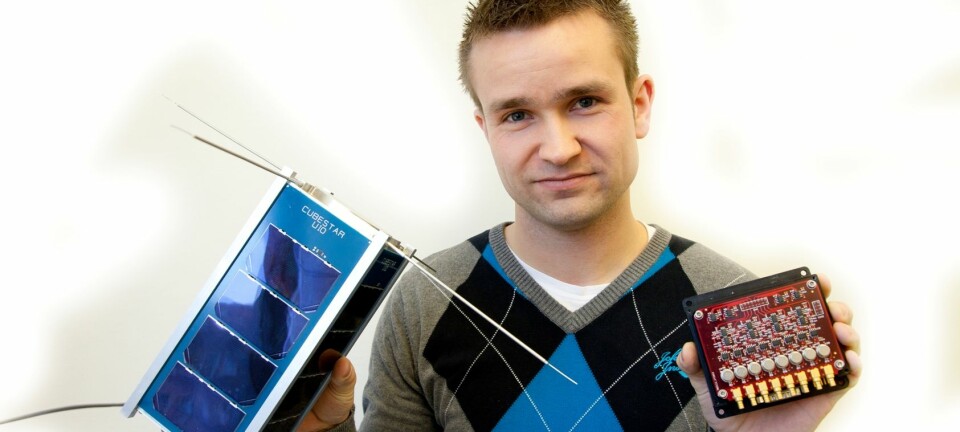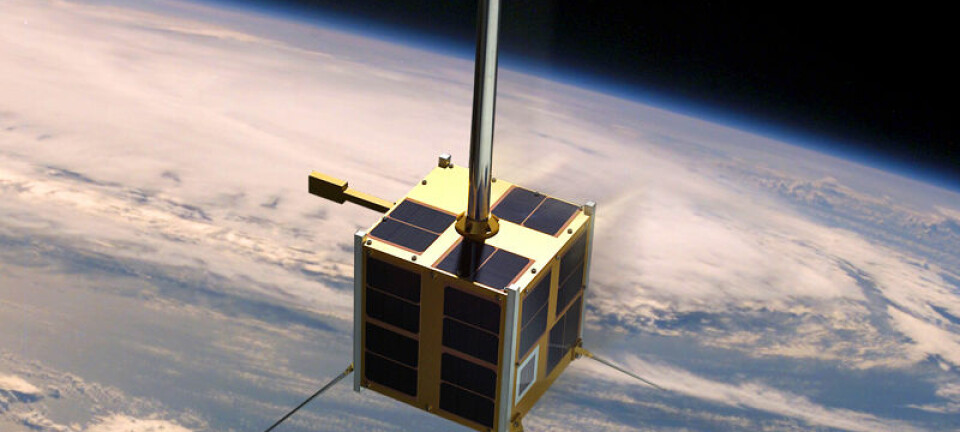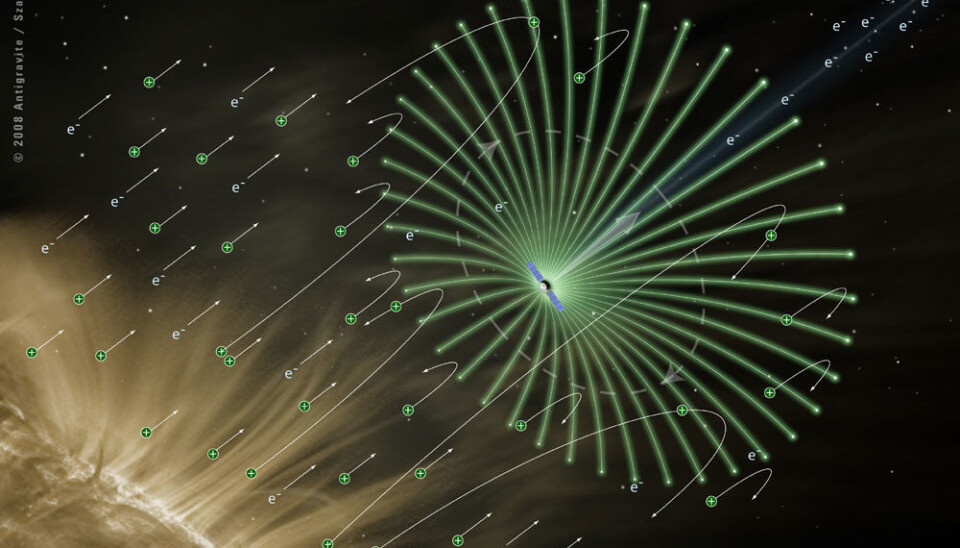
Sailing by solar winds
A new type of solar wind sail can take us to the asteroids. Tests in space are scheduled next year when a Finnish satellite is launched.
A new type of spacecraft could use long extremely thin and delicate metal threads to exploit the power of solar winds. It could become a viable way of exploring the solar system.
What’s more, an initial trial will be made in 2013 when a Finnish satellite is launched.
Until now sun sail proposals have involved gigantic, ultrathin foils that reflect solar light. Light particles – photons – exert a tiny force when striking such a sail.
A photon sail was tested on the Japanese Ikaros space probe that orbited Venus.
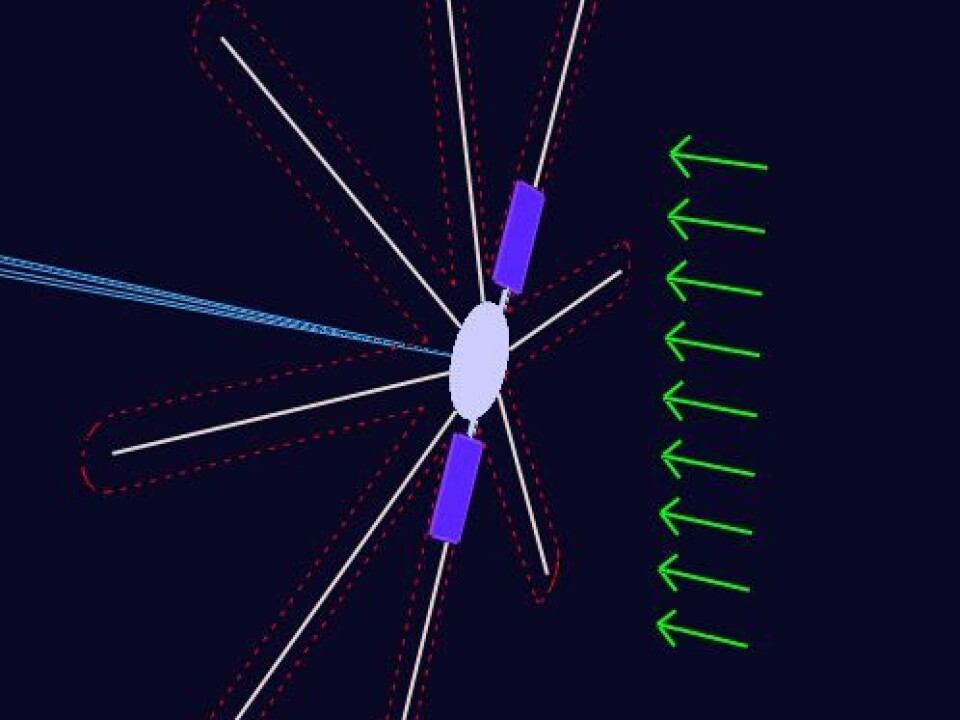
But Pekka Janhunen of the Finnish Kumpula Space Centre has another approach. He doesn’t want to sail wt.
At the recent meeting of the International Astronautical Congress in Naples he explained his plan: A spaceship that sails by means of the solar wind.
The solar wind consists of hydrogen nuclei and electrons that blast away from the Sun. Although at a given spot in space far from the Sun this wind is much, much weaker than the winds of Earth, it can still be used for propulsion.
A sail of threads
Janhunen’s electric solar wind sail has one big advantage on photon sails. It doesn’t really have to be a sail. Imagine something like the ribs of an umbrella or the spokes of bicycle wheel radiating out from a central, rotating hub or reel.
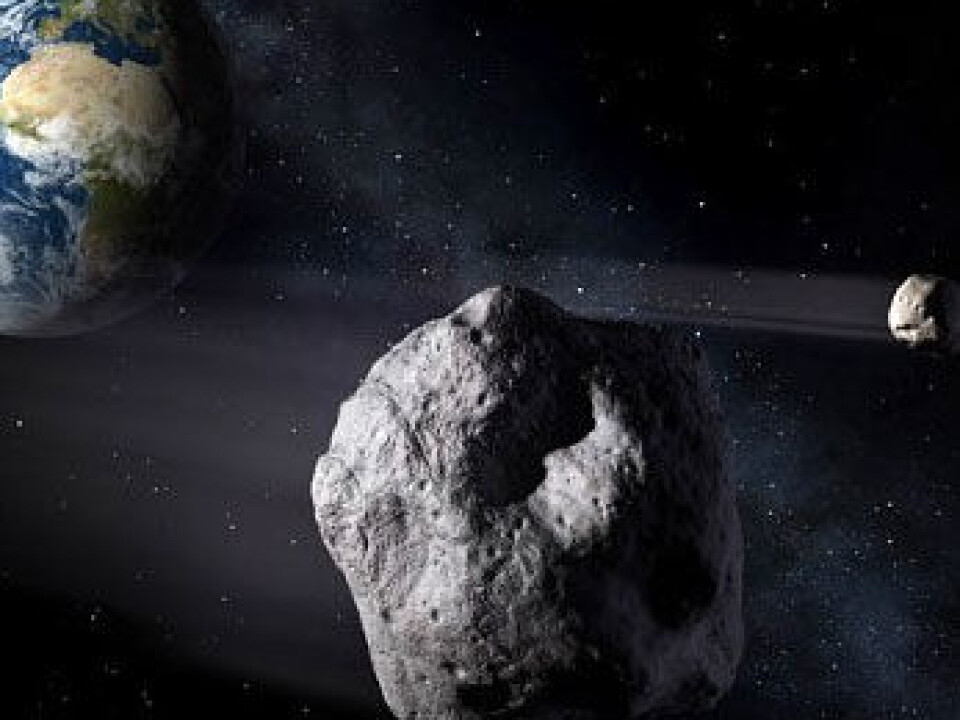
These spokes would are ultrathin threads which would be much easier to deploy than a foil. Centrifugal force would keep them extended as the space craft spins. The threads would also be much lighter than a foil and take less space when reeled in – and weight and volume are always a key factor when sending anything away from Earth.
How do you make a sail of threads? Wouldn’t the solar wind pass right through? The answer to that is to give the threads an electrical charge. That’s why Janhunen calls his solar wind sail an e-seil.
Electrical field
The solar wind has an electrical charge. Hydrogen nuclei have a positive charge and electrons a negative charge.
Janhunen would give the thin threads in his e-sail a powerful positive charge. This creates a positive electrical field which would spread out between the threads like an invisible sail.
When negative-charged electrons from the solar wind collide with this positive field they slow down, just like when the wind pushes up against a sailboat here on Earth. On an ocean or lake the wind transfers some of this kinetic energy to the sail and thus to the boat.
But the Finnish vessel will head for more distant ports of call than any fullrigger. Janhunen suggests a trip to the asteroid belt.
Asteroid hopping
Such a voyage could navigate from asteroid to asteroid, something like island hopping in the Aegean. This is possible because an electric solar wind sail can manoeuvre more freely than a normal spaceship.
A spaceship without a solar sail is powered by rockets. These are fired up at the start of the journey and then a vessel mostly steers by the pull of planetary gravitational fields.
The E-sail provides a weak, but steady power from solar winds during the entire journey. And the sail can steer by changing its positive charge.
If you decrease the positive charge on one side of the wheel of threads the effect of the solar wind on this side will diminish. The sail will thus turn at an angle.
By regulating the electric current to these spokes a vessel can be steered from asteroid to asteroid along trajectories that are much faster and efficiently than what can be achieved with lateral or retrorockets and planetary gravity.
The space vessel wouldn’t need to carry heavy tanks of fuel on board. Its source of fuel, the Sun, will keep putting out for billions of years.
On a tack towards Mercury
Other voyages are also possible.
-
The solar sail can be turned so that the spaceship slows down in a solar orbit. Then it could move closer to the Sun, for instance toward the planet Mercury. If two probes were sent, one of them could land and collect samples from the surface and the other could haul them back to Earth.
-
Collections of enormous quantities of data. High resolution photos and video from distant planets take a long time to send to us by radio signals. This limits the amount of data. The new probes could store digital info on memory chips and freight them back to space near the Earth, where the content could be transmitted faster.
-
An e-sail can be used to manoeuvre a spaceship to places in space that harder to reach by rockets. For instance high above the orbital plane of the planets, where a solar telescope could study solar eruptions.
- E-sails can be set up as watch posts against asteroids which pose a risk of colliding with the Earth.
A civilization-saving proposal would be to use the e-sail to tow such asteroids out of their collision course. Although the e-sail has little power, it could work steadily for years and years.
Thus it could make a doomsday asteroid skim close by our planet instead of hitting it dead on.
Up with student satellites
Janhunen and his colleagues were allocated EU funds in December 2010 to build two laboratory prototypes of the most important parts of the e-sail.
They have built the reel that can wind in the narrow threads and demonstrated how the threads can be deployed in space.
This project will be completed in December 2013. But in March a 10-metre thread will be sent into space on a student satellite built in Estonia.
In 2014 a 100-metre thread will be tried out on the first Finnish student satellite, Aalto-1.
A video from the University of Helsinki shows how the thin threads are produced in the laboratory.
Later Janhunen hopes the EU will give the go-ahead for the next project, the Solar Wind Electric Sail Test (SWEST). This will involve a somewhat larger satellite with four threads that will each extend a kilometre out into space. A full-scale future spaceship would probably use 20 km threads
The project participants are Finland, Sweden, Estonia, Germany and Italy. They are willing to cooperate with any others who want to get a real solar wind powering the e-sail.
Reference:
Pekka Janhunen, Sini Merikallio, Petri Toivanen, Jouni Envall and Jouni Polkko: Possibilities Opended by Electric Solar Wind Sail Technology, 63rd International Astronautical Congress, Naples, Italy.
--------------------------
Read the Norwegian version of this story at forskning.no
Translated by: Glenn Ostling
